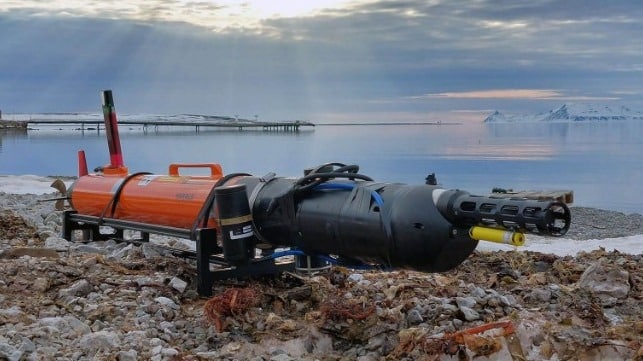Autonomous Drone Subs Help Researchers Study Arctic Plankton
Exploring Phytoplankton Blooms in Svalbard

In May 2022, the Arctic waters of Kongsfjorden, Svalbard, came alive with the vibrant colors of spring. As the sun shone brightly, the cold waters began to warm, triggering a spectacular bloom of phytoplankton. These tiny organisms are crucial to marine ecosystems, forming the foundation of the food chain. Researchers are keen to understand this phenomenon better, as it plays a significant role in the health of our oceans. This article delves into the innovative methods employed by scientists to study these blooms, highlighting the blend of traditional techniques and cutting-edge technology.
Innovative Research Techniques in the Arctic
As the spring bloom of phytoplankton unfolds, researchers like Tore Mo-Bjørkelund and marine biologist Sanna Majaneva are on the front lines of exploration. Mo-Bjørkelund, a PhD candidate at NTNU, has developed advanced algorithms to map these blooms in both time and space. He deploys two autonomous underwater vehicles (AUVs) into the fjord, which are designed to detect the fluorescence emitted by chlorophyll, the green pigment essential for photosynthesis in phytoplankton.
While the AUVs represent the forefront of technological advancement, Majaneva relies on a more traditional tool: the Niskin water sampler. This simple yet effective device collects water samples at specific depths, allowing researchers to analyze the concentration of phytoplankton. Despite the high-tech nature of the AUVs, Majaneva emphasizes the reliability of traditional methods. “Those things really work,” she states, highlighting the challenges of ensuring new technologies perform consistently in the field.
The combination of these two approaches allows researchers to gain a comprehensive understanding of phytoplankton dynamics. The AUVs can navigate through the water, identifying areas with the highest concentrations of chlorophyll, while the water sampler provides precise samples for further analysis. This synergy between old and new methods is crucial for unraveling the complexities of algal blooms.
Understanding the Ecosystem Through Collaboration
The study of phytoplankton is not just about understanding these organisms in isolation; it also involves examining their interactions with other marine life. Majaneva, who focuses on zooplankton, aims to uncover how these creatures coexist and influence one another within the marine ecosystem. The annual spring blooms of phytoplankton are vital, as they support a diverse range of marine species, including fish and larger predators.
The research conducted by Majaneva and her colleagues is part of the ‘Nansen Legacy’ project, which investigates the rapidly changing marine climate and ecosystems. This interdisciplinary initiative emphasizes the importance of collaboration among scientists from various fields. “We need each other’s knowledge to see the big picture,” Majaneva asserts, underscoring the necessity of teamwork in addressing complex environmental issues.
As the AUVs map the underwater landscape, they reveal that phytoplankton distribution is not uniform. Instead, it exhibits a fine-scale patchiness that traditional sampling methods struggle to capture. Understanding this distribution is crucial for comprehending the interactions among different organisms within these patches. The insights gained from this research will help scientists predict how changes in phytoplankton populations may affect higher trophic levels in the food chain.
The Future of Ocean Research
As the Nansen Legacy project concludes, the focus shifts to the future of ocean research. Mo-Bjørkelund has transitioned from academia to entrepreneurship, establishing a company dedicated to underwater technology. Meanwhile, Majaneva continues her work at NTNU, employing genetic methods to identify the diverse organisms present in water samples. The integration of environmental DNA and genetic barcoding is revolutionizing biodiversity mapping, although challenges remain in accurately identifying all species.
The pressure to conduct cost-effective research is ever-present. Advanced technologies like Mo-Bjørkelund’s underwater robots promise to streamline data collection, allowing researchers to explore multiple locations and depths efficiently. This capability could significantly reduce the time and resources needed for fieldwork, making ocean research more accessible.
Looking ahead, ongoing projects at NTNU aim to enhance the capabilities of autonomous underwater vehicles. By incorporating sonar technology and advanced statistical methods, researchers hope to gain deeper insights into the physical, biological, and chemical processes occurring in the ocean. As the ocean continues to change, these innovative approaches will be essential for understanding and preserving marine ecosystems.
